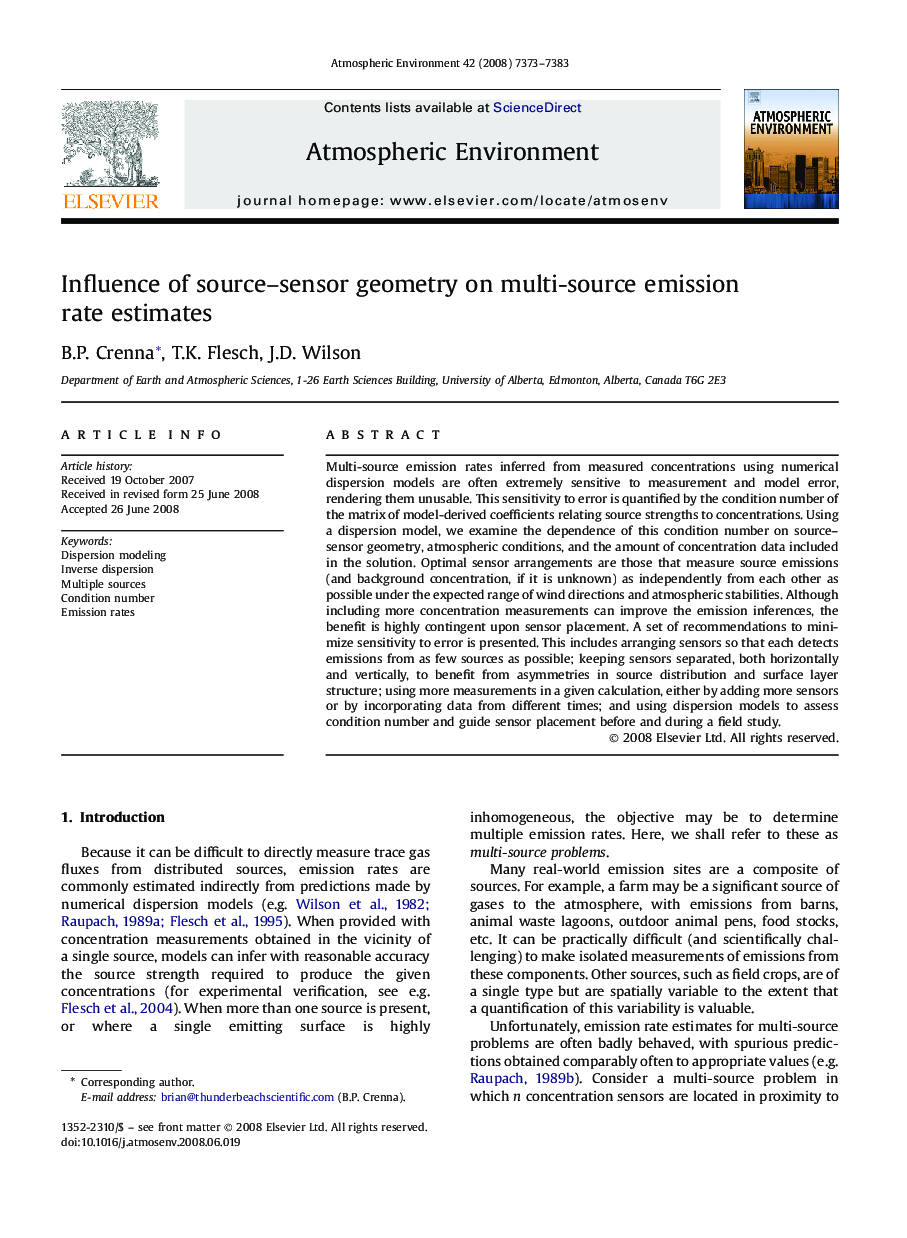| Article ID | Journal | Published Year | Pages | File Type |
|---|---|---|---|---|
| 4442183 | Atmospheric Environment | 2008 | 11 Pages |
Multi-source emission rates inferred from measured concentrations using numerical dispersion models are often extremely sensitive to measurement and model error, rendering them unusable. This sensitivity to error is quantified by the condition number of the matrix of model-derived coefficients relating source strengths to concentrations. Using a dispersion model, we examine the dependence of this condition number on source–sensor geometry, atmospheric conditions, and the amount of concentration data included in the solution. Optimal sensor arrangements are those that measure source emissions (and background concentration, if it is unknown) as independently from each other as possible under the expected range of wind directions and atmospheric stabilities. Although including more concentration measurements can improve the emission inferences, the benefit is highly contingent upon sensor placement. A set of recommendations to minimize sensitivity to error is presented. This includes arranging sensors so that each detects emissions from as few sources as possible; keeping sensors separated, both horizontally and vertically, to benefit from asymmetries in source distribution and surface layer structure; using more measurements in a given calculation, either by adding more sensors or by incorporating data from different times; and using dispersion models to assess condition number and guide sensor placement before and during a field study.
